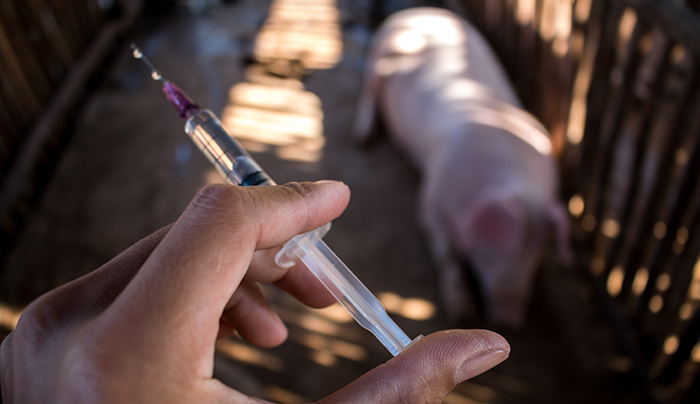Red Robin, our producer and industry insider, on the interesting changes in disease control over the last 20 years
I am sure the months of April to July pass much more quickly than any others.
One minute we are rushing around trying to get fertiliser and spray timings right and the next we seem to be combining. We started combining on July 23, which is about average for us, and then the weather forecast conversations started.
Someone always has a forecast with some rain in it, although I have come to the conclusion that your interpretation of them depends on where you are on the optimism scale. Last night there was a possibility of a thunderstorm, but I was sure we wouldn’t get one – we did and it was noisy and wet and there is 5mm in the rain gauge this morning.
I do curse the pigs when we are combining and am envious of those purely arable farmers who can just combine, chop the straw and then the field is finished. We do seem to have a reasonable amount of barley straw, though, so hopefully we can get enough from that and chop most of the wheat. I know that is sacrilege to most, but I have spent too long in the past baling every last strand of straw in difficult conditions with a baler that didn’t want to play the game. Our barley yields seem good so far, which is definitely one big positive.
We have seen an interesting change in the disease control strategy over the last 20 years.
Since we have had an industry-wide reduction in the use of antibiotics, the focus has intensified on vaccines.
There is far more testing available, either government-sponsored or drugs company-sponsored, and there seems to be a near-inevitability that a positive test results in the use of another vaccine.
That’s fantastic if that vaccine definitely solves the problem you have but it is annoying when the picture is more clouded than that – when we could treat with antibiotics you got a very quick response (as long as it is the right one). Trying to have a healthy herd by using vaccines seems to be much harder – I am not sure whether it is because of the different strains of disease or whether it is just because the picture is more complex. The financial advantage to antibiotics was that if you didn’t need them you didn’t use them, whereas with vaccines you have the cost all the time.
We are definitely right to limit the use of antibiotics, but we need to be careful that the total vaccine cost doesn’t escalate. It is very difficult to know if the vaccine is cost effective because sometimes it takes a while to have an effect and that effect is only shown gradually. What we really need is some method of on-farm testing that tests for a range of diseases rather than an individual one, but I realise that is tricky.
Although neither the pigs nor the pig team enjoy these very high temperatures, we do always seem to have good results in the summer.
It is amazing how the weather and conditions can affect an indoor herd in temperature-controlled, fan-ventilated buildings.




